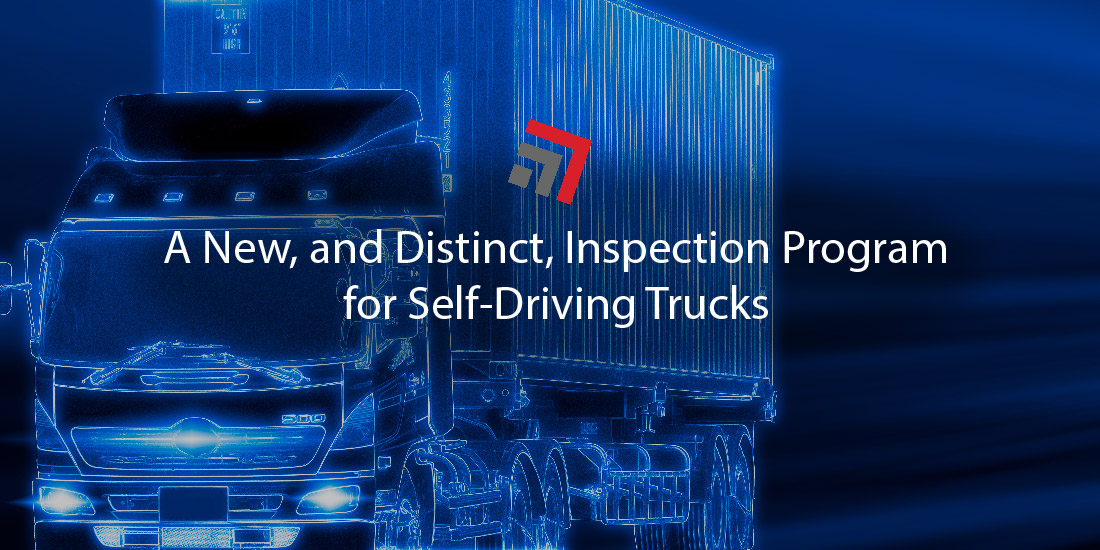Autonomous (self-driving) trucks are the snazziest technology for trucking. Yes, other innovations like automating procurement decisions will undoubtedly be gamechangers. But, let’s be honest, other than logistics nerds, no one is going to turn their head at a computer buying freight.
Self-driving trucks though? That’s straight out of I, Robot. It’s the fun part of the future we like to envision and, the craziest part is, we have already arrived at the point where this technology is a reality in everyday life.
Less than a decade ago, autonomous vehicles were a strange and raw concept. Fast forward to the present day and it’s right in front of our eyes. A Tesla spotting is no longer like seeing a Ferrari and our parents’ new Subaru can parallel park itself.
Like the car industry, self-driving truck companies have spearheaded the development of driverless capabilities for commercial trucks and have grabbed the attention of motor carriers and fleets.
TuSimple, Daimler Trucks, and Embark are among a few names at the forefront of autonomous truck development.
With new technology comes questions of safety
With this novel advancement on pace to mend itself within trucking’s operations, discourse surrounding its implementation has ramped up.
Whether it’s arguments for or against it, safety is often first brought up with self-driving commercial vehicles.
Some argue these vehicles eliminate human error which reportedly is the cause behind 90 percent of fatal accidents (involving commercial vehicles) on U.S. roadways. They could also plan routes avoiding peak traffic hours as a robot doesn’t mind being up at 3am.
On the other hand, some argue these vehicles are an unproven technology and run the risk of causing more crashes. While a self-driving truck has its awe-inspiring qualities, driving in a modest Corolla next to an 80,000 pound missile with no sight of a human operator in it is a terrifying image.
Either way, this debate emphasizes the technology, despite its potential to optimize industry operations, must first be safe enough for it to be a fixture in trucking.
That said, as autonomous vehicles have inched closer to being a viable asset for fleets, the government has gotten involved to ensure safety standards for self-driving trucks are met.
Rollout of new inspection program for self-driving trucks
The safety nuts over at the Commercial Vehicle Safety Alliance (CVSA) have put forward new and, distinct, inspection procedures for self-driving trucks.
This was not an overnight feat either. A litany of stakeholders, including inspectors, highway patrol, carriers, government officials, and autonomous truck developers, have tirelessly collaborated for the past two and a half years to mold together a framework of inspection standards.
Approved by the CVSA on September 22, commercial vehicle inspectors are now tasked to evaluate self-driving trucks through a different lens, one that’s separate from typical human-driven trucks.
Dan Goff of Kodiak Robotics, an autonomous truck developer, told FreightWaves that the joint effort from all involved to develop appropriate inspection standards bridges a trust gap between trucking and law enforcement.
“I think the biggest challenge really is building that trust between law enforcement and the industry and helping law enforcement understand why we’re being so proactive in trying to work with them and willing to submit ourselves to a fairly complex inspection,” Goff said. Courtesy of FreightWaves.
A look inside the inspection program
Inspections for human-driven trucks consist of a pre-trip and a post-trip inspection (usually done by the drivers themselves). On the course of their journey, drivers must cooperate with weigh and inspection stations and are subject to “random” roadside stops. This inspection process relies on the assistance of human drivers to comply. In the case of self-driving trucks, there is, of course, no human to assist.
Thus, the new inspection program, known as the Enhanced Commercial Motor Vehicle Inspection Program, requires carrier personnel conducting pre-trip inspections of self-driving trucks to take a 40-hour CVSA training course and exam. These inspections are also expected to take 40 minutes—twice as long as for a human-operated truck.
CVSA inspectors will also conduct in-transit inspections at certain intervals throughout the truck’s trip and prove that the vehicle has passed its pre-trip inspection, has functioning automated driving systems, and runs within its operational design (the conditions in which it is intended to operate safely).
If a truck passes this checklist, they are permitted to bypass typical inspection sites altogether. However, CVSA inspectors could still pull over a truck if they observe an imminent hazard or are conducting a post-crash investigation.
Self-driving trucks are also not exempt from the cops. Should law enforcement attempt to pull one of them over, the vehicles must be able to respond. The robot trucks will hopefully have enough charm if they need to sweet talk themselves out of a ticket.
Final Thoughts
A noteworthy exception to the new inspections are autonomous trucks with an accompanying safety driver. These drivers are onboard with the vehicle and supervise its operations. As of now, trucks with safety drivers will follow the same inspection processes human-driven trucks do.
Contact one of our team members if you have any questions regarding this topic or any others in domestic logistics.
This is an everchanging industry. Stay current on rail and trucking developments with our weekly Road Map Newsletter.



Recent Comments